6 Ways to Tell if a Kitchen Knife is Worth the Splurge
There are several unspoken rules in the Food52 office: A batch of Chemex coffee is meant to be shared, when pie is served in the team kitchen you have to act quickly if you want a slice, and when Josh Cohen, our Test Kitchen Chef, pulls out a Harry Potter metaphor, whatever he’s talking about is going to be good.
Related: How a Forgotten Piece of Furniture Found a Second Life
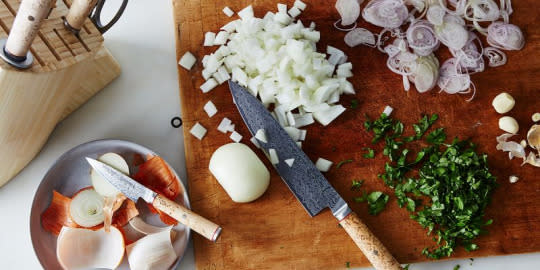
(Photo: Bobbi Lin/Food52)
“You know in Harry Potter,” he told me while preparing food for an event in the office, holding alightweight Birchwood Miyabi chef’s knife in his hand, “when they go to the wand store and hold a wand, they just know it’s good. High-quality knives are the same: You pick up the knife and feel a synergy with it.”
Related: 4 Reasons I’m Obsessed with Our New Nonstick Stockpot
Josh, who cooks everyday in Food52’s test kitchen—for editorial shoots, the food you see in our Shop photos, events, and meetings—spends no fewer than eight hours a day cooking, and that’s just at work. And most of that time is spent with a knife. So when he agreed to spend a week testing out the Miyabi Birchwood Knife Collection before we gave them the go-ahead to bestocked in our Shop, that means that he spent 56 quality hours with the wands—ahem, knives. The result? Josh loved these knifes so much that one lucky set is property of our test kitchen—and others are now available for you and yours.
Related: Hone Sweet Hone: How to Sharpen Your Knives, Any Which Way
Suffice it to say, Josh knows a thing or two about the slice and dice. Here, he shares the 6 key things that make good knives worth the splurge—all of which he found to be exemplified by the Miyabi knives.
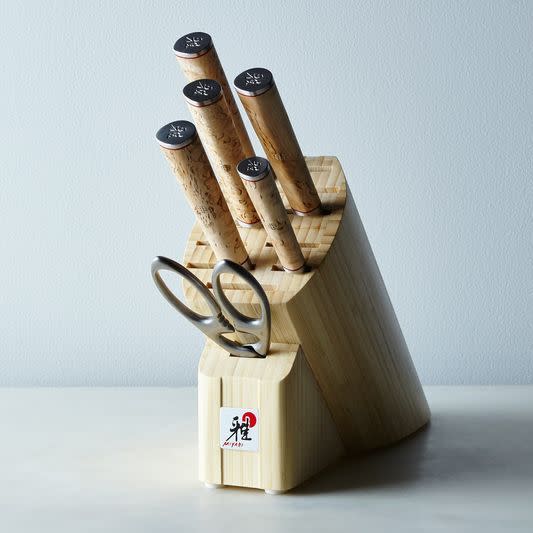
Miyabi birchwood Japanese knife collection. (Photos: Bobbi Lin and Rocky Luten/Food52)
1. Sharpness
“A sharp knife is the best luxury you can have in your kitchen,” Josh said, “It makes every job easier.” When Josh switched over from his admittedly “sort of dull” knife to the Miyabi chef’s knife, he saw an immediate difference.
Related: How to Sharpen a Knife
The Miyabi knives, manufactured in Japan, undergo a four-step hardening process that ensures they stay super-sharp over time.
Related: How I Got the Cooked-On Gunk Off an Enamel Pan
Josh saw the differences in the herbs he was cutting. With his dull knife, the herbs had looked mashed and bruised, but the sharp knife resulted in “pristine little slivers of fresh herbs.” He said, “When you use a sharp knife and have proper technique, everything feels easier—and more pleasurable, too.”
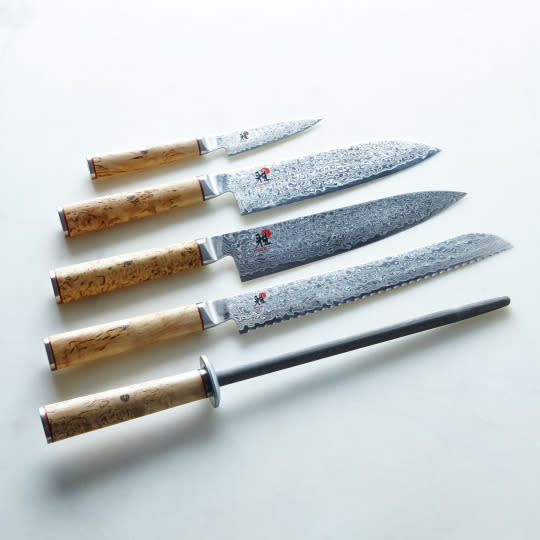

Details of our new birchwood-handled knives. (Photos: Bobbi Lin/Food52)
2. Design
A beautiful knife, Josh explained, is a luxury worth investing in since it’s the tool you’ll likely spend the most time with. “When a knife is in your hand, you notice the little details like the patterns on the blade and the way the handle looks,” he said, referring to the Miyabi blade’s textured pattern and birchwood handles.
Related: 5 Videos That Show Off Crazy Knife Skills
3. Weight
A lightweight knife is easier to maneuver—not to mention less of a burden on your wrist. The birchwood handle on Miyabi knives make them so lightweight that Josh can glide effortlessly with them between kitchen tasks.
Ivan Orkin, the chef and founder of Ivan Ramen in New York, told us recently that the Miyabi Birchwood 4 ½-inch utility knife is “so thin and light that I forget it’s in my hand.” But in a good way.
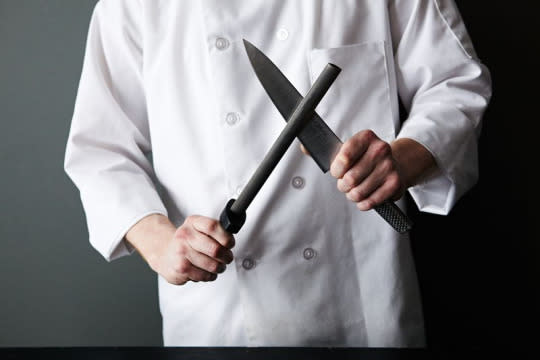
(Photo: Alpha Smoot/Food52)
4. Preciseness
When a knife is hand-honed, as the Miyabi knives are, you can tell, Josh said. During that process, the knife isn’t given a new blade as it is when it’s sharpened, but instead the filaments of the steel are realigned to make it more precise. And, since a honing steel comes with the set, they’ll stay as precise as the day you bought them.
This came in handy last week when Josh purchased a fish filet that had some belly bones still attached. He used the knife to slice the bones off the belly of the fish.
“When a knife is properly honed, all you have to do is tap whatever you’re cutting and it’s like it bursts aside at the seams,” he said.
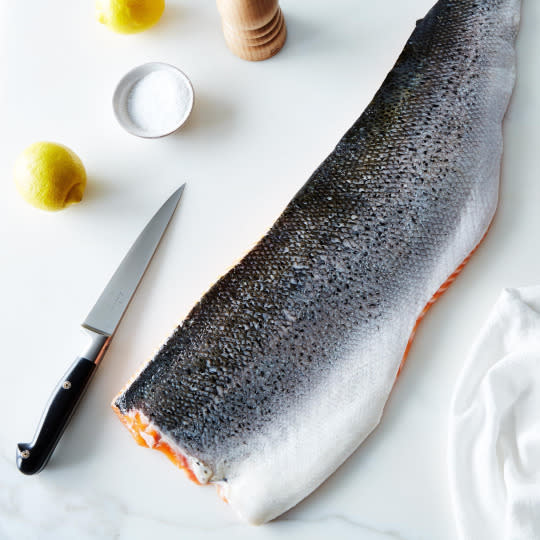

(Photos: James Ransom/Food52)
5. Attention to Detail
In addition to the patterns and beautiful details on the Miyabi knives, Josh said that he loves the attention given to the knife block they came in. Because it includes several slots in addition to ones provided for the four Miyabi knives, a sharpening steel, and scissors that come with it, home cooks can place the knives they already have in the block. A good kit doesn’t shouldn’t replace your old knife collection altogether, but add to it.
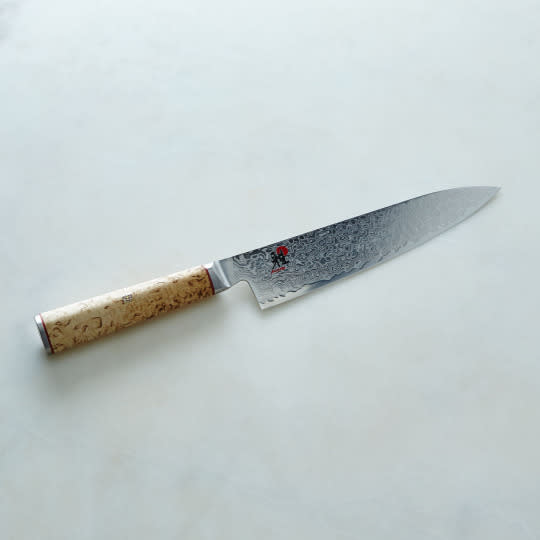
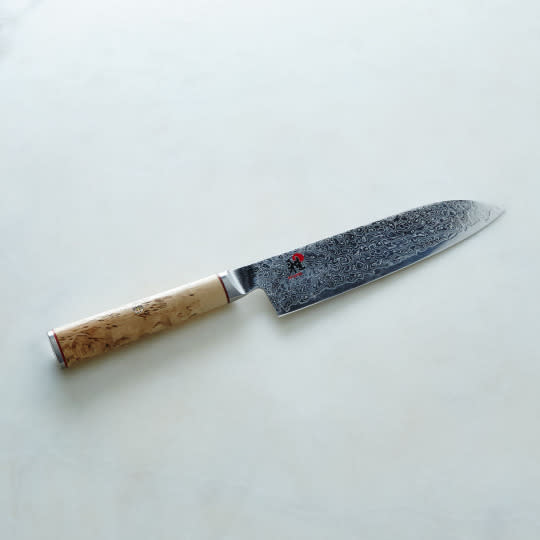
Top: Miyabi 8-inch chef’s knife; Bottom: Miyabi 7-inch santoku knife. (Photos: Rocky Luten/Food52)
6. Length
As for the length of a chef’s knife, Josh said it comes down to personal preference. The Miyabi knives, which are available in an 8-inch chef’s knife and a 7-inch santoku knife (a traditional Japanese knife used for slicing, dicing, and mincing), can be used interchangeably.
“It’s like that Harry Potter thing again,” Josh said, “You choose what just feels better. Or rather, it chooses you.”
By Leslie Stephens.
